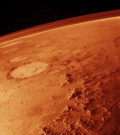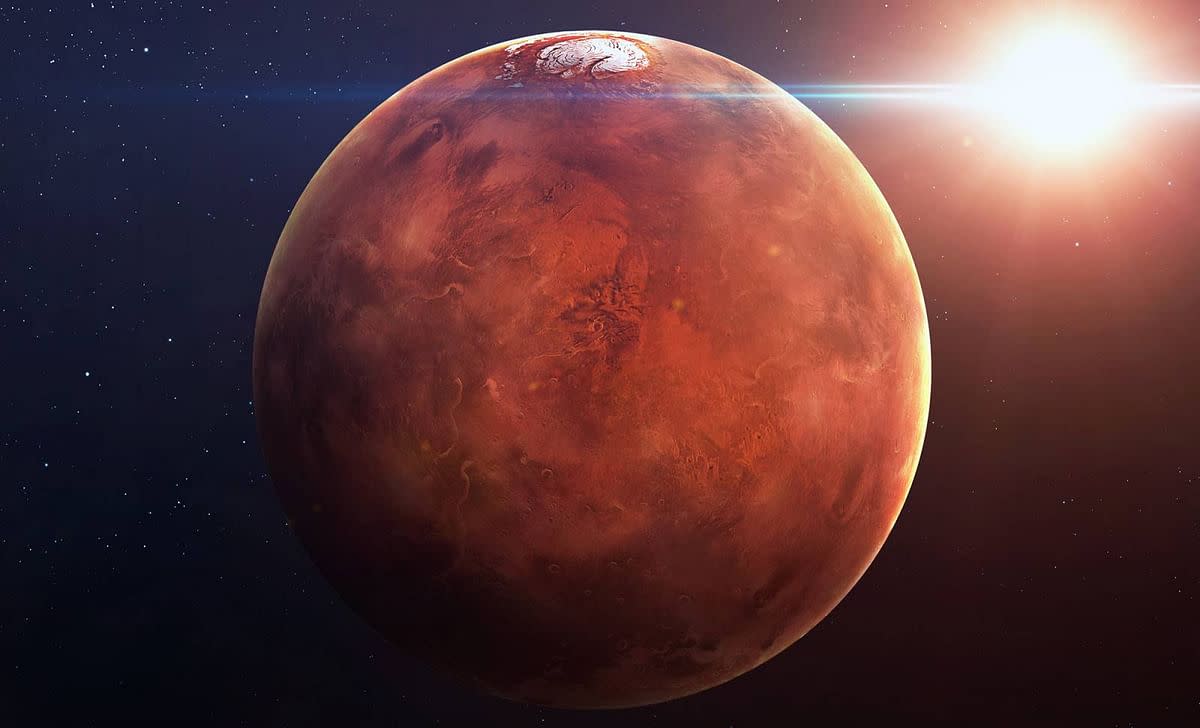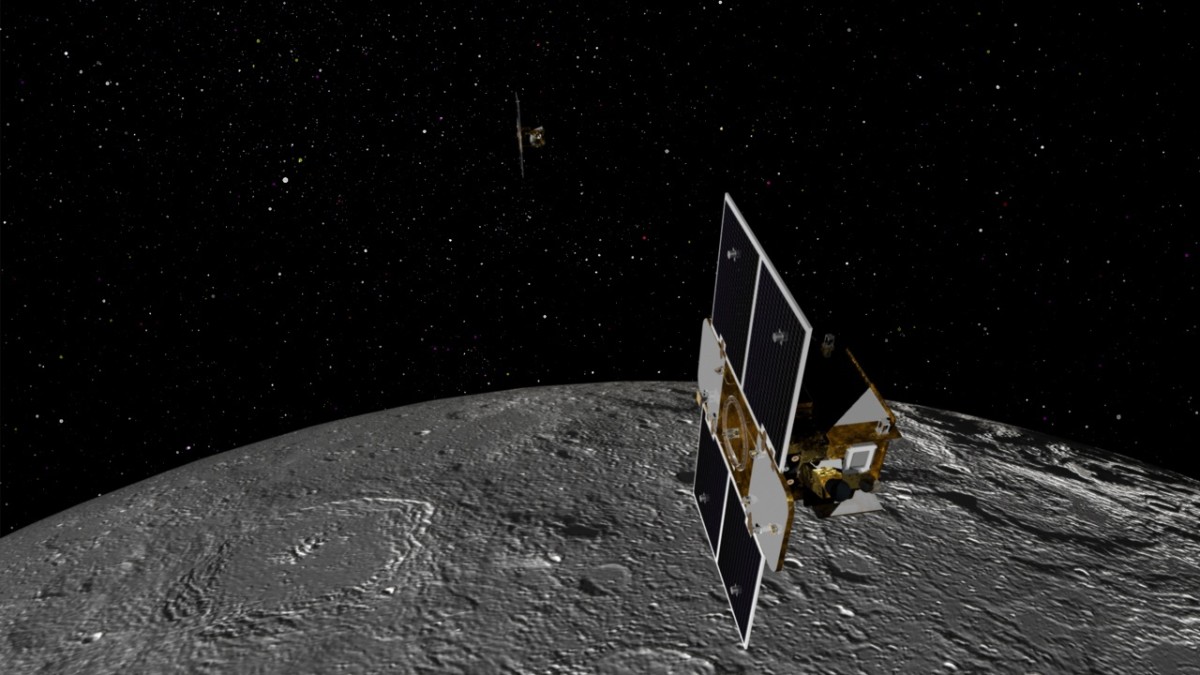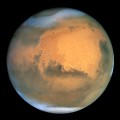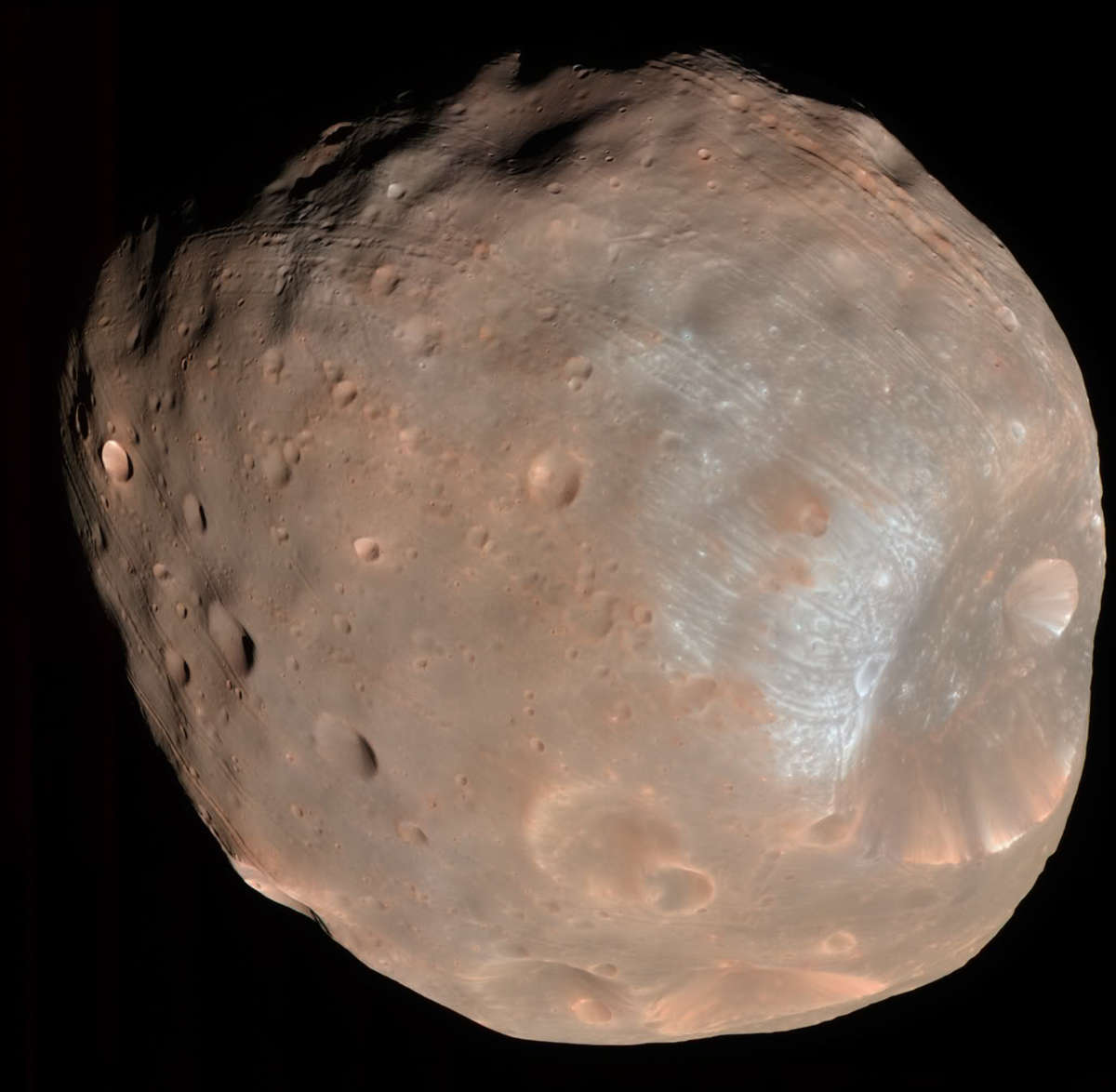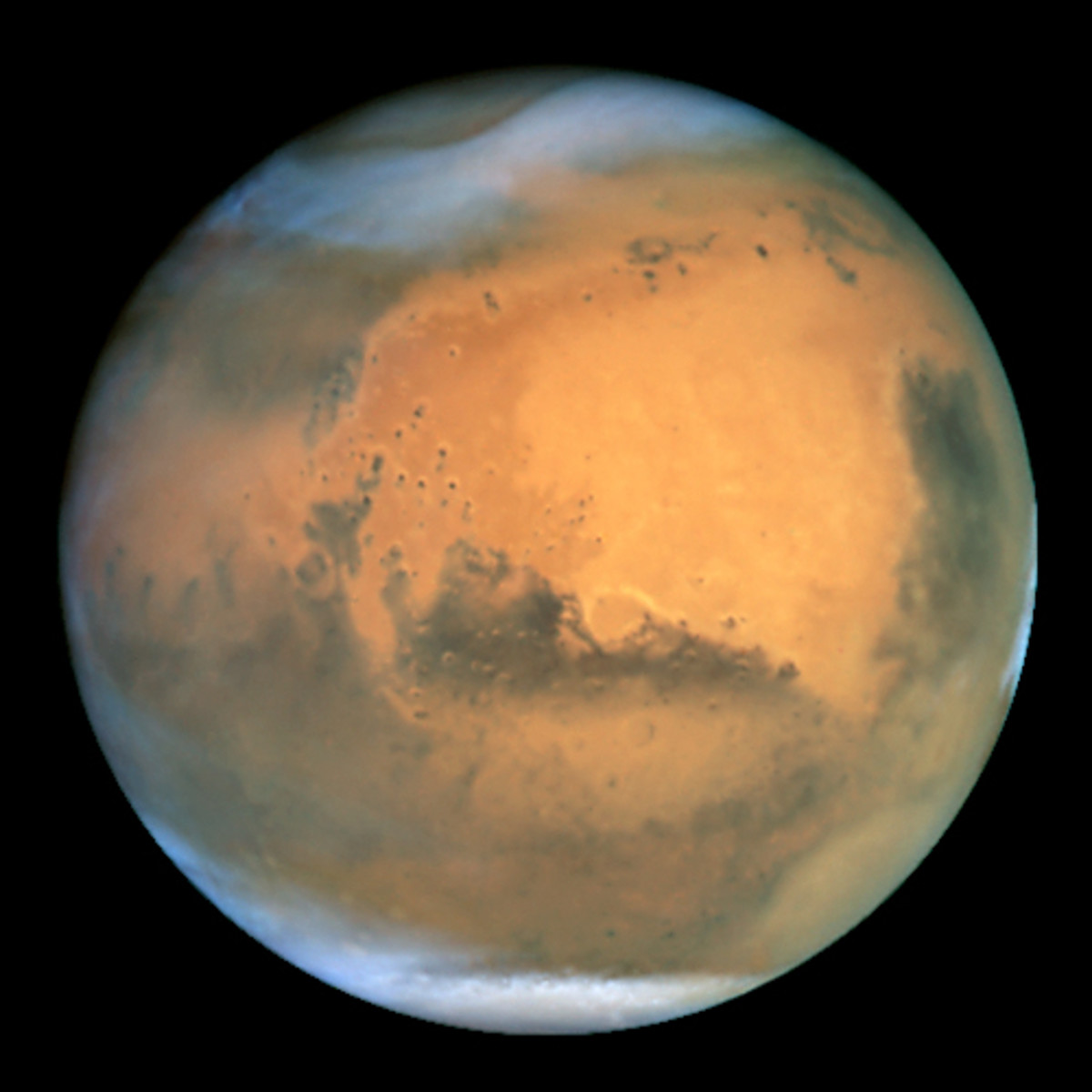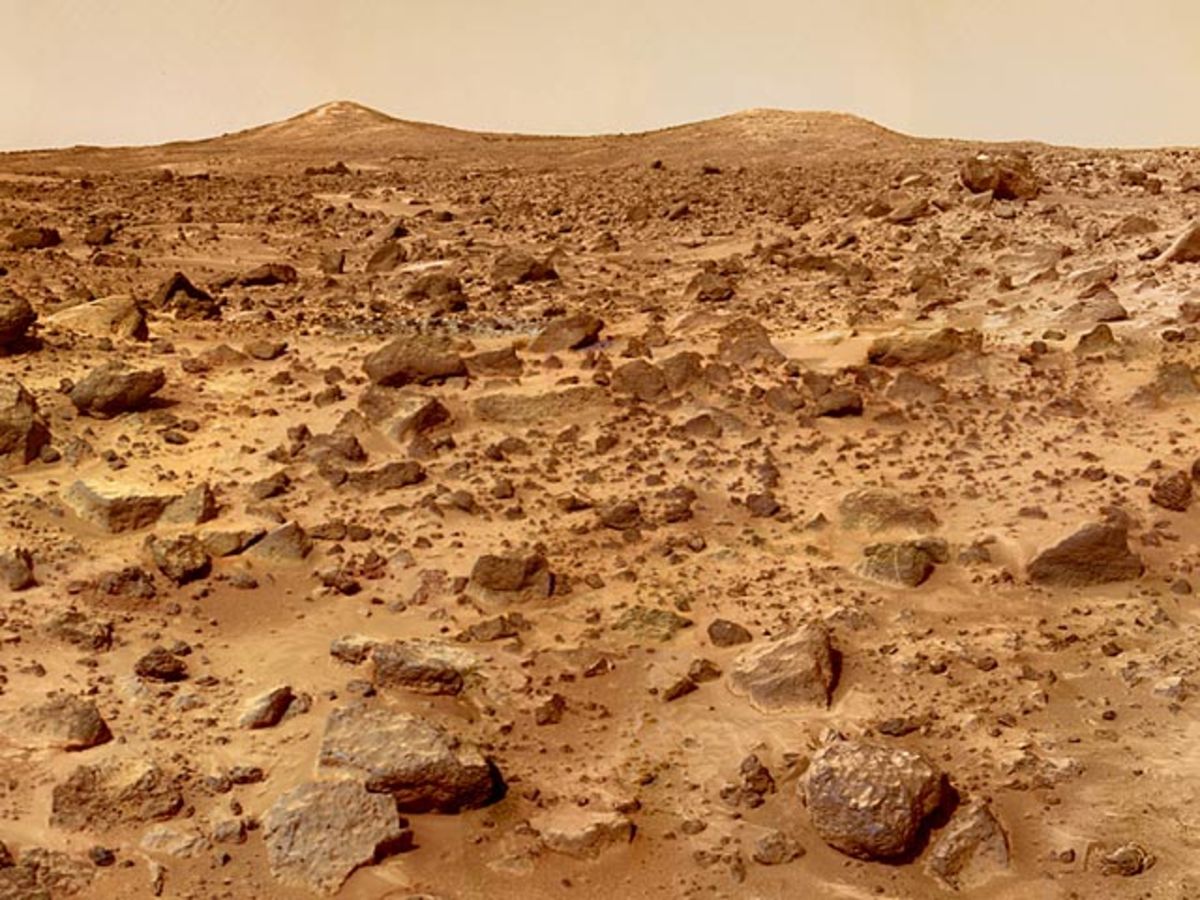California Academy of Sciences Dean Lecture "NASA/JPL Mars Curiosity Rover: Where Will It Take Us?"
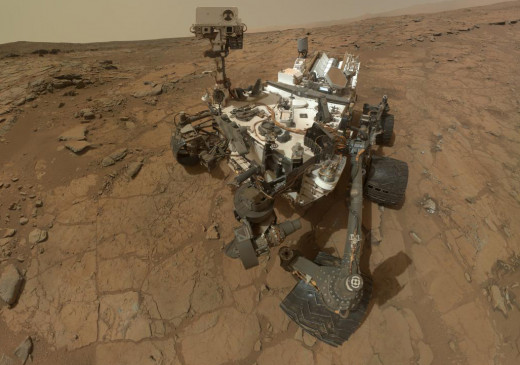
The Morrison Planetarium, Monday, March 11, 2013 7:30-8:30
At 7:40 p.m. on Monday, March 11, 2013, practically every single seat in the California Academy of Sciences’ Planetarium Dome had a visitor from the public in attendance. The topic for the night’s Planetarium’s Dean Lecture, “NASA/Jet Propulsion Laboratory’s (JPL) Mars Curiosity rover: `Where Will It Take Us?’”, presented by Dr. Jennifer G. Blank, a member of Curiosity Rover’s Science Team. This Dean Lecture’s audience had the special privilege and treat of listening to a guest speaker from the National Aeronautics and Space Administration’s Curiosity Rover Science Team with access to the actual science data, footage, videos, and rover scientists.
The presentation started with a video comparing the size of Earth and Mars; the planets spinning in gorgeous colorful 3D computer graphics on the Planetarium’s dome ceiling. Mars appeared smaller than Earth, about two-thirds the size of our own planet.
The “Curiosity rover” Overview:
The next few PowerPoint slides showed an overview of “Curiosity’s” science components and some of the people in charge of the rover’s equipment. Text and line pointers indicated where on Curiosity the equipment was located and what functions the custom-built equipment performed. While the United States’ NASA/JPL assembled, tested, and controlled the rover, some parts actually came from international space partners, making Curiosity a rover representing the interests of scientists and engineers worldwide. The following slides contained JPL photos showing the size of Curiosity compared to other Mars rovers that landed before it: “Pathfinder” and the Mars Roving Laboratories “Spirit” and “Opportunity” parked alongside their younger larger sister. Compared to “Curiosity,” which has the size of a small compact car, the Mars Roving Laboratories appeared the size of a small desk on wheels and “Pathfinder” the size of a wheelbarrow. Many other differences could be seen: Curiosity has a one-meter long arm, articulated in the center just like a human’s arm with an elbow and containing the core sample drill and sensors, a telescoping masthead towering on top of the body that contained cameras and a laser beam drill, much larger wider hollow spoke wheels for navigating and conquering Martian terrain, a jutting ridged rear containing the nuclear core pellets, and an increase in surface area for installment of scientific instruments.
The audience noticed “Curiosity’s” lack of solar panels (this rover’s nuclear powered) and its nice white skin color compared to the blue solar panels and golden metal skin of the older smaller rovers already on Mars. Another unique rover difference—Curiosity has 17 cameras scattered throughout its body and boom arms, the most ever sent to rove on another planet. Another interesting Curiosity trait—the unique hollow-spoke wheels that allow Curiosity to tramp down the Martian soil before the arm shovel digs a trench. The black wheels’ metal slats (connected similar to xylophone metal bars) have square holes in them spelling “JPL” in Morse Code…a little joke by JPL to add their own trademark logo to this rover. Thus wherever Curiosity roams, “JPL” gets spelled out in Morse Code on the sands of Mars.
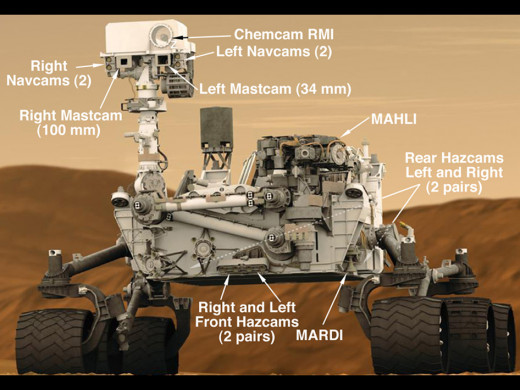
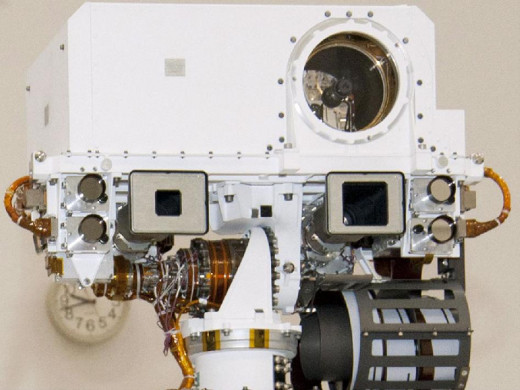
- There are 406 scientists assigned to the Curiosity Science Team (as of 2013)
- NASA scientists chose Mount Sharp/Gale Crater as landing site
- Curiosity has 17 cameras, the most ever sent to rove on another planet.
- The black wheels’ metal slats have square holes in them spelling “JPL” in Morse Code.
Nonetheless, while much of the Martian scientific community’s attention turned to “Curiosity,” one should note that JPL’s “Opportunity” rover still roams elsewhere on Mars after nine long years, much longer than its anticipated life expectancy—a testament to the design, skill, and outstanding construction quality of NASA/JPL engineers. With such long life from solar-powered “Opportunity,” JPL expects the equivalent and even more life expectancy from nuclear-powered “Curiosity,” and thus currently assigned an impressive 406 scientists alone to the Curiosity Rover Team (not including engineers and other team members).
A Timeline slide showed the United States’ NASA missions to Mars thus far with an image of the successful probes and rovers: “Vikings 1” and “Viking 2” landers in the 1970s, “Pathfinder” rover, “Opportunity” and “Spirit” rovers, “Phoenix Lander,” Mars Reconnaissance Orbiter satellite, and Curiosity rover. An elongated satellite photo of the entire Mars topography with terrain features showed precisely where these rovers and landers touched down on the surface. Dr. Blank explained what the computer-colored planetary map showed, Mars’s surface features with elevated areas and low plains, the low plains often devoid of meteor impacts, a possible sign of geological surface changes performed over the eons. Could the smoothness of the plains be a sign of flowing surface water millions of years ago during a wetter, warmer, more hospitable climate?
Seven Minutes of Terror: Landing Curiosity
Curiosity on Mars:
The presentation continued with a satellite photo map of Gale Crater’s interior that showed where Curiosity has been, the photo snapped from the Mars Reconnaissance Orbiter as it flew past. A colored line showed the landing site and the present location of the rover (line headed left to right). Curiosity now roams inside Gale Crater in an area with three different shades of minerals and has drilled its first two test holes since touchdown in November 2012.
A video showed the “Seven Minutes of Terror” on the landing sequence from capsule ejection, entry through Mars’s thin atmosphere, “Skycrane” lowering descent of the rover, and wheel touchdown followed. The Planetarium’s darkness, digital projectors and surround sound really enhanced the viewing experience.
NASA scientists chose Mount Sharp as landing site due to the high likelihood of finding signs of water that flowed millions of years ago. Alternate landing sites were deemed too “strange” in geology for exploration, meaning NASA scientists may not be able compare Martian geology and minerals to anything here on Earth. As such, NASA decided Mount Sharp had geological features that they could compare to Earth’s geology and mineral formations. NASA’s decision to land in Gale Crater has been backed up by field research. For instance, Dr. Blank and a few NASA/JPL colleagues went to Utah for two weeks. They donned on NASA “futuristic” spacesuits and they explored the desert of Utah to compare and contrast mineral and geological formations in Utah with those on Mars. (In fact, the terrain on Mars looks very terrestrial). Even though the suits weren’t airtight, the Field Research Team learned how cumbersome some of the movements using spacesuits were. For example, using GPS was hindered by the thick gloved fingers and that did not allow for easy punching of the small GPS buttons.
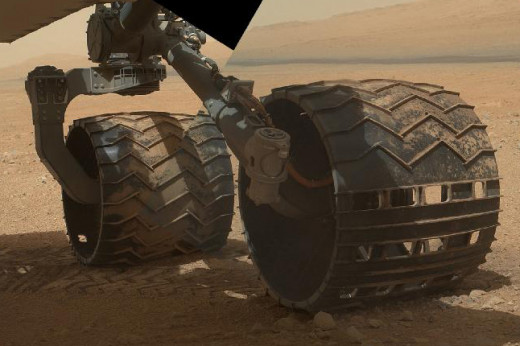
The Findings So Far:
The Curiosity rover has detected signs of water in the past in addition to detecting CO2 and minute traces of Methane. Scientists speculated that the Methane could have came from volcanic gasses deep inside Mars that got ejected and spewed out onto the Martian surface soil.
The presentation’s following slides showed different rock strata configurations: pebbles, layered sedimentary strata, conglomerates, molten igneous rocks, and sand deposits. Some of these geological formations could only be created with the existence of water, hence the underlying importance of choosing a landing site where the Martian geological features could be compared to those found on Earth.
The rover has also drilled and fired its laser into rocks along its path. Most of these rocks were named for NASA scientists and engineers present on the Science Team. Using the meter-long robotic arm allowed for all sorts of analysis not made possible from previous Mars rovers.
Curiosity’s Status as of March 2013:
With the speed of light, radio signals from Curiosity takes 14 minutes to reach Earth and vice-versa. The Science Team used to operate on “Mars Time” which is very similar to Earth’s plus an additional 37 minutes. Now the NASA Curiosity Team has reverted back to “Earth Time.”
In April, the two planet’s orbits will cause the sun to get between Earth and Mars, an astronomical phenomenon called “Conjunction.” This will interfere with communications with the rover. NASA engineers will thus take a break from driving Curiosity while the NASA scientists will try to catch up on all the science data collected so far until the planets’ orbits around the sun are such that the sun no longer blocks communications.
Presently, the rover has been at the same spot for the past month due to a software issue that NASA has resolved. The next plan is to move on and climb the boulder-filled slope of Mount Sharp, photographing and analyzing the boulders and soil samples for scientists to analyze. A photo showed the slope and Dr. Blank had the audience imagine how Curiosity would look next to these huge boulders, akin to a computer (the rover) inside a room (a boulder). The gigantic length of the slope means that this nuclear-powered rover will take some time to reach the summit of Mount Sharp.
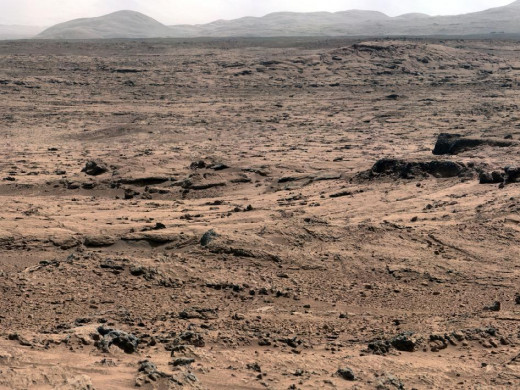
Mission Success!
Soon after the lecture on March 11, 2013, a TV news release on the NASA channel announced the success of the Mars Curiosity rover mission. As Dr. Blank wrote, “…the rover had detected mineralogy and features corresponding to a standing body of water that was probably slightly alkaline and potable. The primary science objective of the mission was to detect a habitable environment, past or present, on Mars. And we did that at Yellowknife Bay” (see map waypoint below, Sol 124).
Audience's Questions and Dr. Blank's Answers
With the PowerPoint presentation over, Dr. Blank welcomed the audience’s questions.
Q: Could the Rover right itself if tipped over climbing Mt. Sharp? Does it have any self-righting mechanism?
A: Unlikely. NASA engineers take great care to drive it carefully to avoid tipping over.
Q: How will this all end for the Curiosity Rover?
A: No one knows yet. But this Rover has limited amounts of Spectrometer gas and the equipment has a usage limit as all mechanical parts wear out over time and usage. The ChemCam laser might burn out. The drill bits might get dull enough to become useless. The power source is Plutonium so the Rover has ample power and doesn’t need a breeze to clean any solar panels.
Q: The RAD (Radiation Detector) was the only instrument active during the flight to Mars. How will astronauts cope with the radiation danger if sent to Mars?
A: NASA will publish a report citing the radiation levels detected from the RAD. Scientists could then use that data for further analysis to determine radiation effects on any future manned missions to Mars.
Q: How do you like the rover so far?
A: Ecstatic! Everything works! NASA has been very pleased with the rover and its findings so far.
Q: Are the photos color-enhanced?
A: No. All the photos are real-color and show how the Martian surface really looks like.
Q: What differences would a person make if standing beside the Rover? Obviously the astronaut is inside a helmet and spacesuit, but how would an astronaut on Mars contribute to the mission that a rover cannot?
A: The person would allow scientists to know how things feel…texture, touch, and hardness. Also, the astronaut will be able to see things with real eyes and not from the lens of a camera.
Q: What happens to the rover at night when the sun goes down?
A: This rover powers down and “naps,” using its 37 core Plutonium pellets to warm itself until it “wakes up” again. (The nuclear core prevents the rover’s electronics from freezing at night).
Q: Was there any fear of bringing Earth contaminants to Mars?
A: Yes. Curiosity was assembled in a “Clean Room,” but sensors did detect the presence of rocket fuel traces on the ground from the landing sequence so NASA knows it did contaminate Mars using the “Skycrane lowering method.”
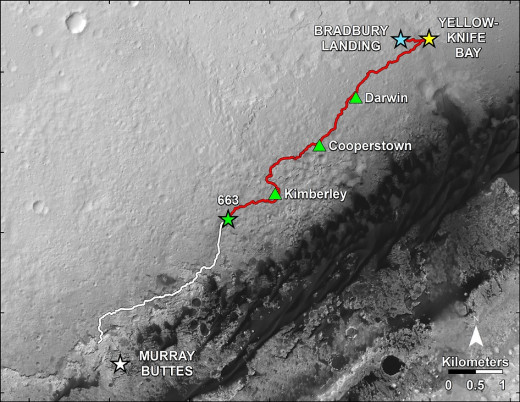
Curiosity Rolls On: Status as of June 2014
In June, 2014, NASA’s Curiosity Mars rover completed its first Martian Year (687 Earth Days) since landing in August 2012. Some of the findings that the rover discovered during the first year were:
- Martian Gale Crater was sustainable for simple forms of life. By drilling into two mudstone slabs, Curiosity analyzed that the site once contained a lake, water essential for supporting microbes.
- Data about the radiation levels during the descent and on the Martian surface could help future human explorers to the Red Planet.
- The Martian atmosphere holds very little methane, a biological byproduct. Also, Mars’ early atmosphere loses a lot of light atoms as they disappear to the top of the atmosphere
- Age and radiation levels of rocks drilled.
Curiosity has since traveled 4.9 miles (7.9 kilometers) since landing. As of late 2013, the rover has sustained some wheel damage driving over the rough terrain with sharp rocks (more on this later). Essentially, holes were getting perforated in the aluminum slats that make up the wheels faster than the previous 12 months driving on Mars. Thus the rover performed “backwards driving” at a slow pace of 329 feet in February 2014 to preserve its wheels and test the possibility of driving backwards. NASA has mapped a safer route for the rover to traverse (see green “Safe Transit Route” in map below), a route that hopefully avoids a lot of the rough terrain and sharp rocks on its way to the Murray Buttes. The route uses images from the Mars Reconnaissance Orbiter.
An exclusive map provided by Dr. Blank and not before seen by the public shows the original and new route and also the crater where Curiosity is located in.
The Curiosity rover is still on its way to Mount Sharp and has traveled through a set of waypoints (Darwin, Cooperstown, and Kimberly) to get there. The white path has been determined by NASA as the safest route for the damaged wheels to take on the way to the Murray Buttes. The wheels were damaged by embedded sharp rocks on the trip between the “Cooperstown” and “Kimberley” waypoints. The white line path attempts to avoid similar rugged terrain by taking a more northern route than originally planned.
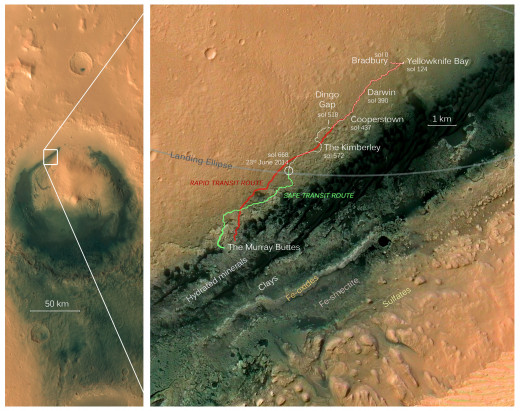
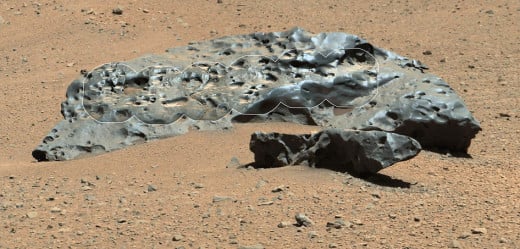
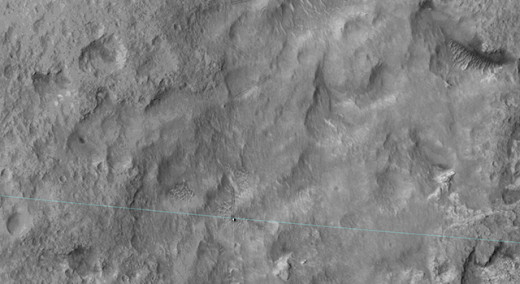
Special Thanks:
Special Thanks to Dr. Jennifer G. Blank of NASA’s Jet Propulsion Laboratory for permission to use her name, presentation content and information, and for answering my questions in writing this article.





